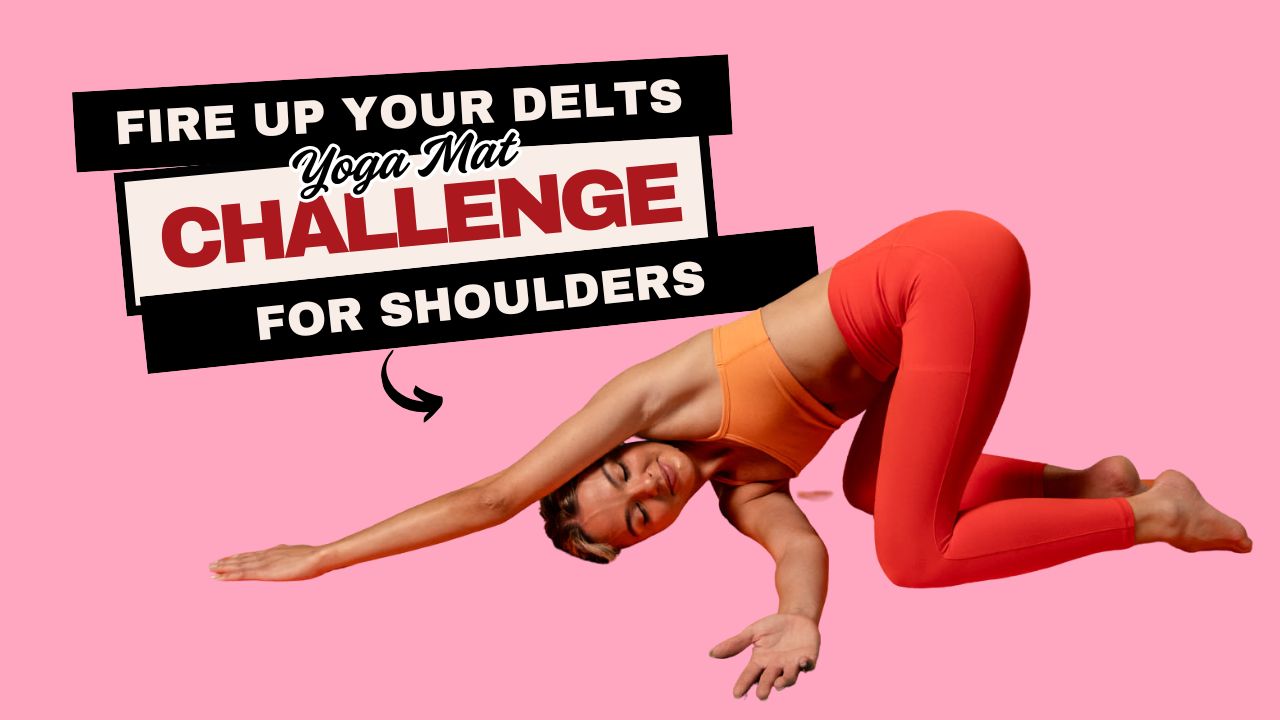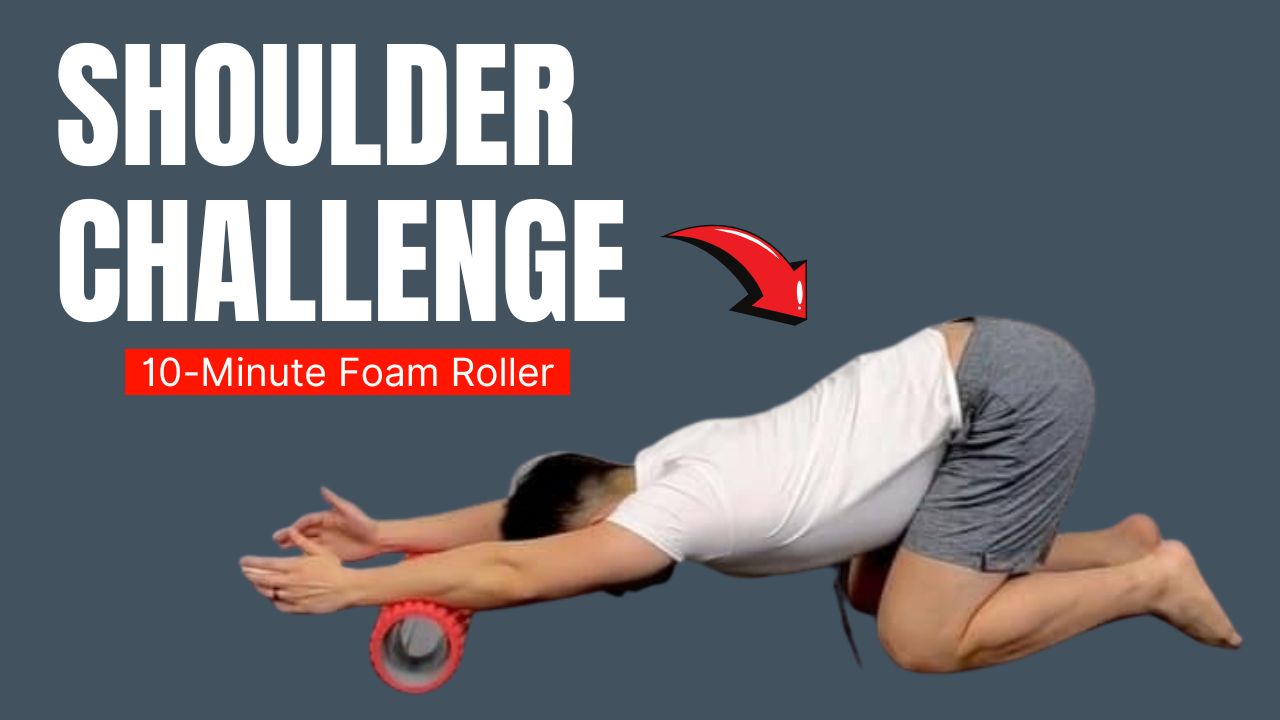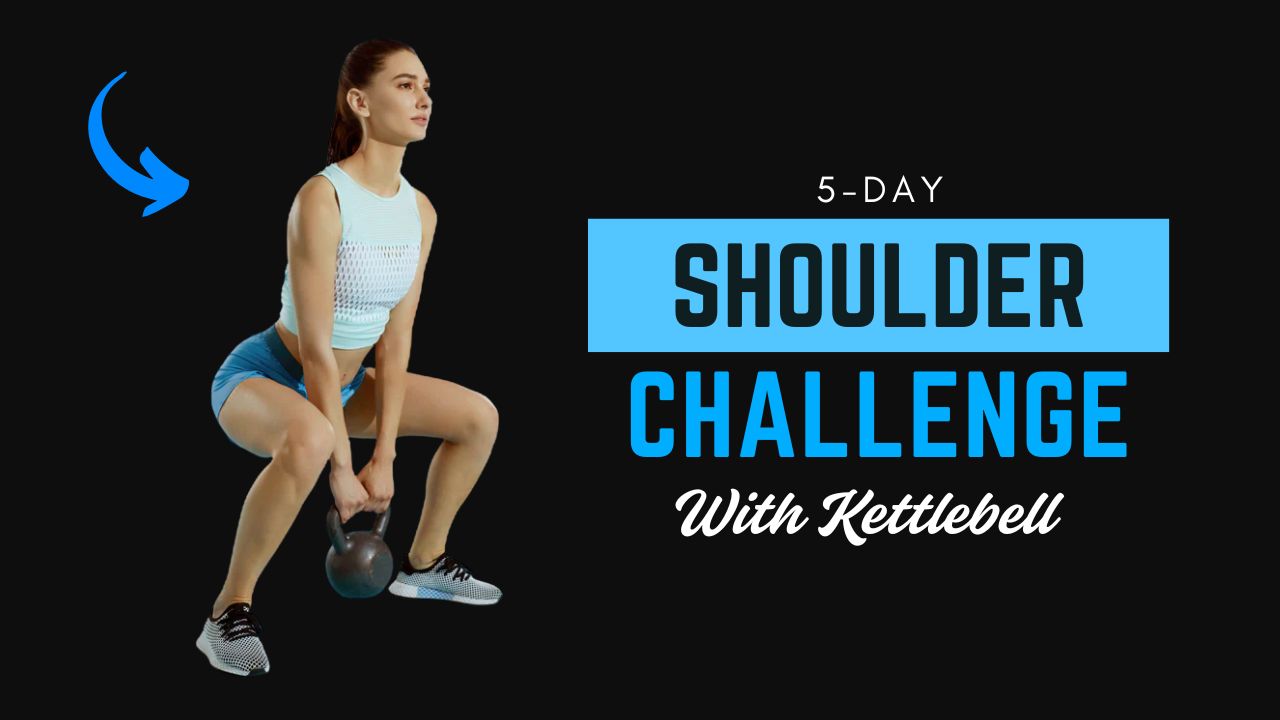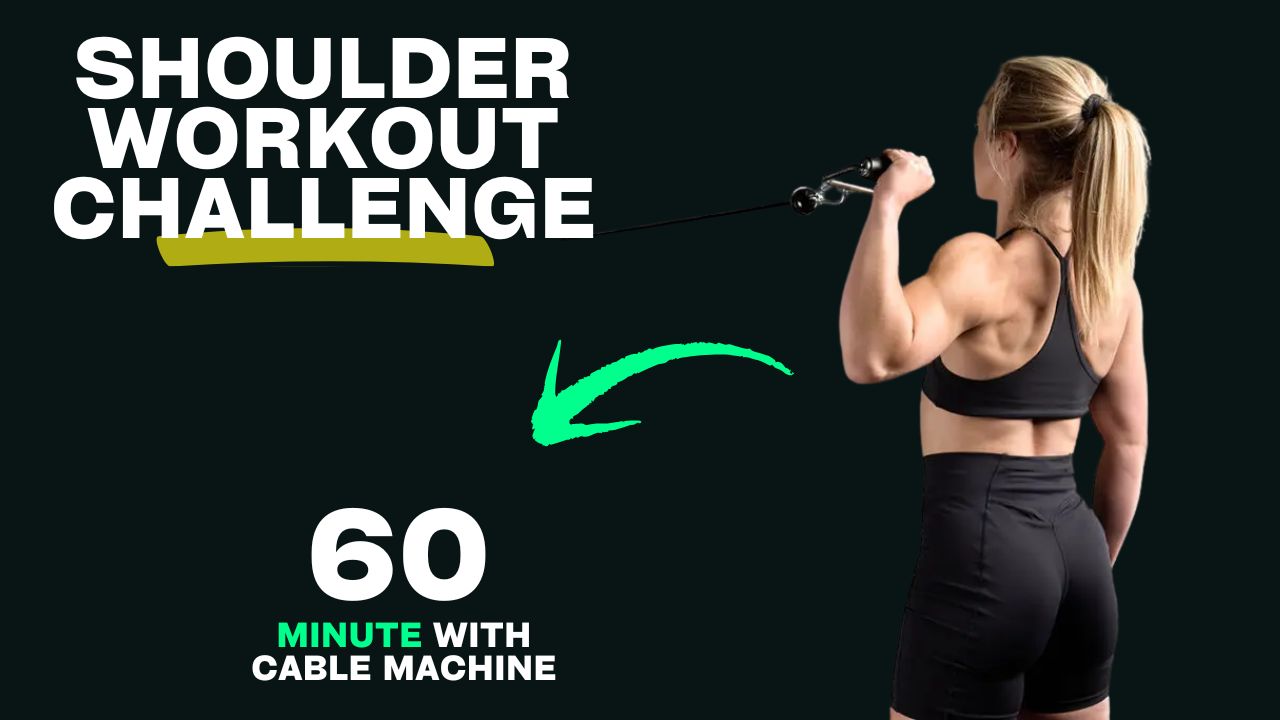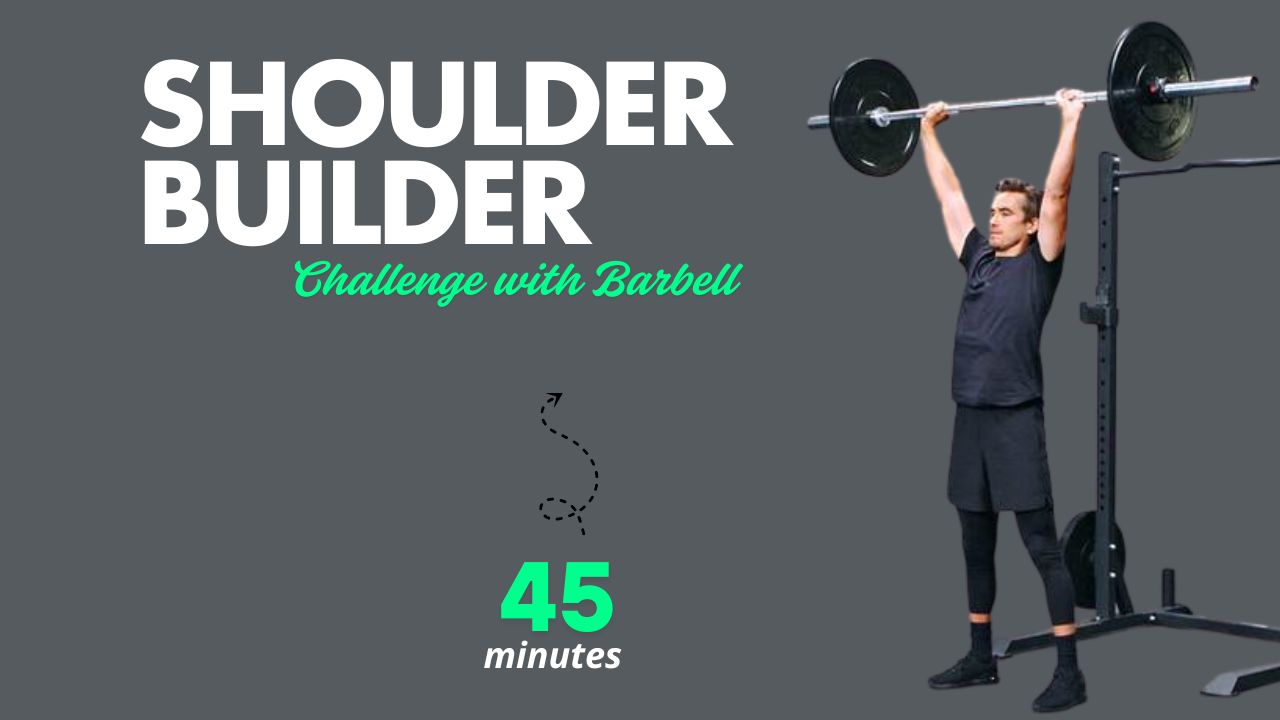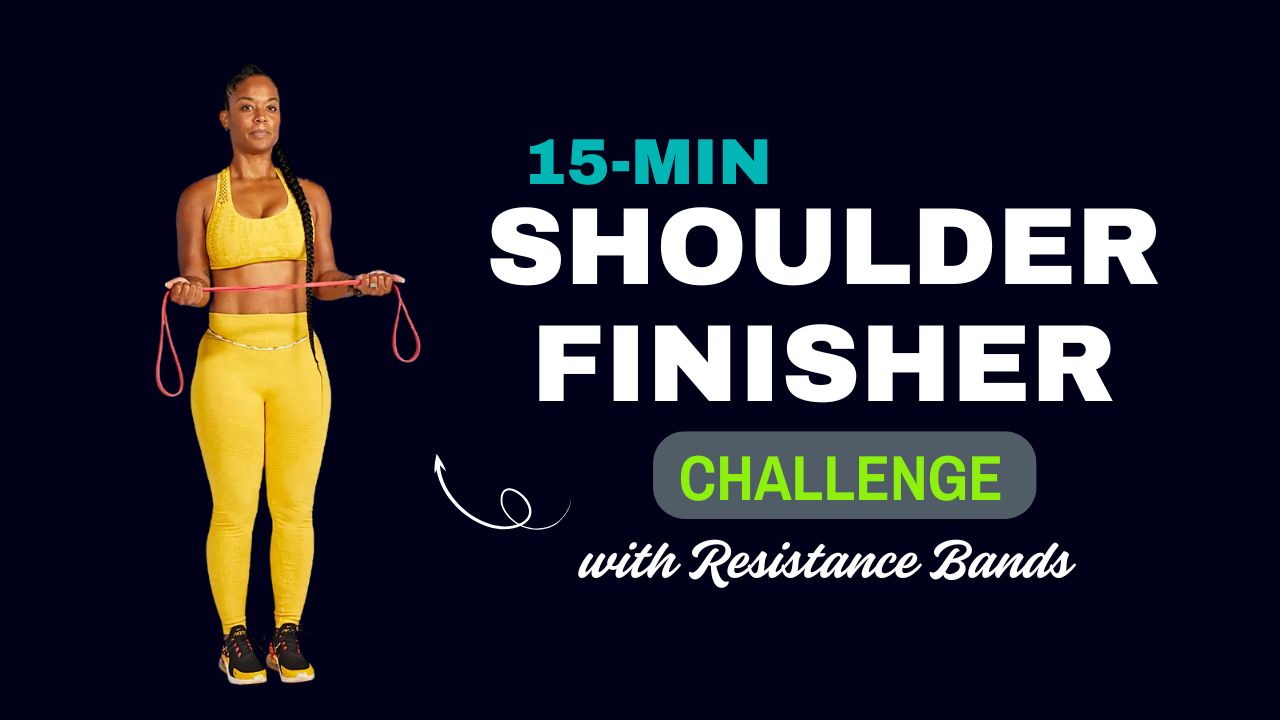Shoulders are more than just a muscle group that looks impressive in a T-shirt — they are the cornerstone of upper body strength, posture, and balance.
Whether you’re hoisting groceries, stabilizing during a sports move, or simply keeping an upright posture while walking, your shoulders work harder than you think.
But here’s the catch: most people unknowingly train their shoulders in ways that build bulk without stability.
This 45-Minute Shoulder Builder Challenge is different. Designed around barbell-focused movements, it not only strengthens your deltoids, traps, and rotator cuff but also enhances core engagement, joint stability, and balance.
By the end of this routine, you won’t just have stronger shoulders — you’ll move better, stand taller, and feel more confident in your daily activities.
Did You Know?
The shoulder joint is the most mobile joint in your body, capable of moving in almost every direction. But this freedom comes at a cost — it’s also the most prone to injury. Proper training can reduce this risk significantly.
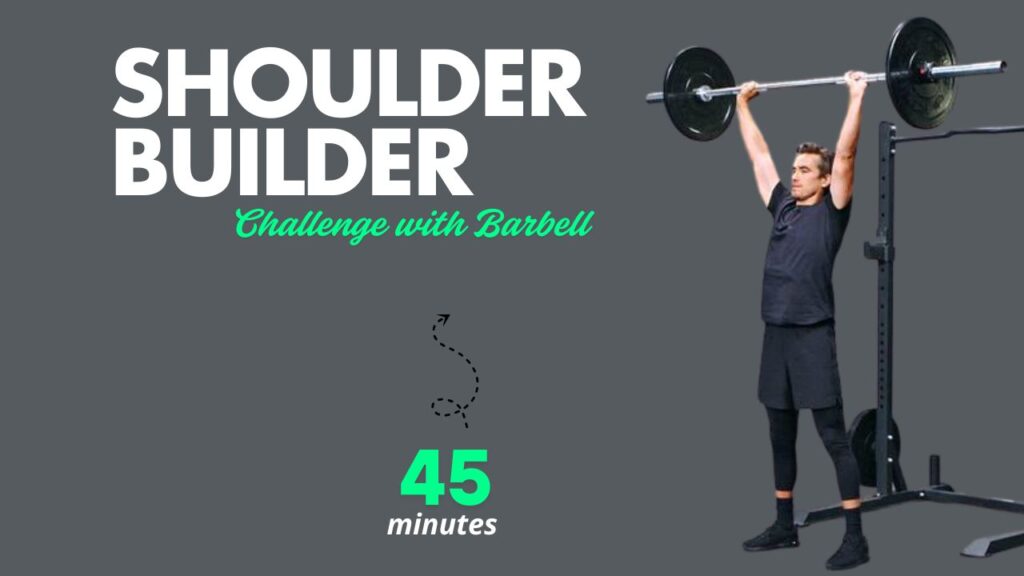
Table of Contents
Why Use a Barbell for Shoulder and Balance Training?
While dumbbells and resistance bands have their place, the barbell’s fixed load distribution forces you to engage stabilizing muscles more actively.
This is especially true when lifting overhead or maintaining balance in a standing position. Barbell work also allows progressive overload — increasing weight over time — which is essential for muscle growth and strength.
Benefits of Barbell Shoulder Training for Balance:
- Core Activation: Keeping the bar steady engages your abs, obliques, and lower back.
- Symmetry Correction: Helps identify and fix strength imbalances between sides.
- Grip & Forearm Strength: Holding the bar during compound moves challenges your grip.
- Full-Body Coordination: Encourages proper kinetic chain function from feet to fingertips.
What Can Happen After 30 Days of the 45-Minute Shoulder Builder Challenge
| Positive Changes | Possible Challenges |
|---|---|
| Noticeable increase in shoulder strength and stability. | Mild muscle soreness from progressive overload. |
| Improved balance and core engagement during daily activities. | Risk of overtraining if rest days are ignored. |
| Better posture and reduced forward shoulder rounding. | Potential shoulder discomfort if form is compromised. |
| Enhanced muscle definition in the deltoids and traps. | Plateau in progress without gradual load adjustments. |
| Greater confidence in handling overhead lifts. | Fatigue if nutrition and sleep are not adequate. |
| Improved coordination and control with barbell movements. | Need for mobility work to prevent stiffness from heavy lifting. |
| Increased endurance in shoulder and upper body training. | Possibility of joint strain if warm-ups are skipped. |
Do’s and Don’ts for the 45-Minute Shoulder Builder Challenge with Barbell
| Do’s | Don’ts |
|---|---|
| Warm up for 5–8 minutes with dynamic shoulder mobility drills before lifting. | Skip warm-ups and start lifting heavy right away. |
| Start with a manageable weight to master correct form. | Load the bar too heavy in the first set. |
| Maintain a tight core and neutral spine during all lifts. | Arch your lower back excessively while pressing overhead. |
| Use controlled, steady movements for both the lifting and lowering phases. | Swing or jerk the bar to gain momentum. |
| Keep elbows slightly bent during isolation moves like front raises. | Lock out elbows aggressively on every rep. |
| Progress gradually by increasing weight or reps over time. | Make sudden large weight jumps without adaptation. |
| Focus on proper breathing — exhale during the lift, inhale during the return. | Hold your breath during the entire movement. |
| Substitute exercises (e.g., landmine press) if a move causes discomfort. | Push through sharp pain or ignore discomfort signals. |
| Rest 45–60 seconds between sets for optimal recovery. | Rush through sets without adequate rest or recovery. |
| Cool down with light stretches to maintain flexibility. | Skip post-workout stretching and mobility work. |
The 45-Minute Shoulder Builder Challenge — Overview
This challenge consists of 8 barbell-based exercises, each targeting different parts of the shoulder complex and core stability. You’ll perform them in a circuit style with minimal rest, keeping your heart rate up for added endurance and calorie burn.
We’ll go through each move with:
- Description of the exercise
- How-to instructions
- Tips for safety and progression
Exercise 1: Barbell Overhead Press
Description: The barbell overhead press is a classic compound movement that targets the anterior (front) and medial (side) deltoids while engaging the core and upper back. It’s a primary strength-builder for the shoulders.
How to:
- Stand with feet shoulder-width apart, barbell resting across your upper chest.
- Grip the bar slightly wider than shoulder-width.
- Engage your core and press the bar overhead until your arms are fully extended.
- Lower slowly back to the starting position.
Pro Tip: Keep your wrists straight and avoid arching your lower back — this ensures the force is driven through your shoulders, not your spine.
Exercise 2: Barbell Front Raise
Description: This move isolates the anterior deltoids while demanding stability to keep the bar level. Great for building front shoulder definition and posture support.
How to:
- Stand tall, holding the barbell with both hands in front of your thighs, palms down.
- Keeping your arms straight (slight bend at elbows), lift the bar to shoulder height.
- Pause briefly, then lower with control.
Pro Tip: Avoid swinging your torso — momentum takes away the benefit of the lift.
Exercise 3: Barbell Upright Row
Description: This exercise targets the medial deltoids and traps, helping to create that coveted “capped shoulder” look while improving pulling strength.
How to:
- Grip the bar with hands about shoulder-width apart.
- Pull the bar straight up along your body to chest height.
- Lower slowly back to start.
Pro Tip: Keep elbows higher than wrists to maintain proper form and reduce joint strain.
Exercise 4: Barbell Push Press
Description: A powerful, dynamic lift that combines a slight leg drive with an overhead press, allowing you to handle heavier loads and build explosive strength.
How to:
- Hold the bar at shoulder height with an overhand grip.
- Bend knees slightly, then drive upward, using leg power to assist the press.
- Lock arms overhead, then lower under control.
Pro Tip: Focus on an explosive drive without turning it into a squat.
Exercise 5: Barbell Behind-the-Neck Press
Description: Targets all three heads of the deltoids but requires good shoulder mobility. Best done with light to moderate weight to avoid strain.
How to:
- Place the barbell on your upper traps (like a back squat position).
- Grip slightly wider than shoulder-width.
- Press bar overhead until arms are extended.
- Lower carefully behind the neck.
Pro Tip: Avoid this move if you have shoulder impingement issues.
Exercise 6: Barbell Shrug
Description: This movement isolates the trapezius muscles, which support shoulder stability and posture.
How to:
- Stand with feet hip-width apart, holding the barbell in front of thighs.
- Shrug shoulders as high as possible.
- Pause, then lower slowly.
Pro Tip: Don’t roll your shoulders — lift straight up to prevent joint stress.
Exercise 7: Barbell Landmine Press
Description: A joint-friendly pressing variation that’s excellent for building strength and stability, especially for those with shoulder discomfort during standard overhead presses.
How to:
- Place one end of the barbell in a landmine attachment or secure it in a corner.
- Stand facing the bar, gripping the free end with both hands or one hand for a unilateral version.
- Press the bar up and forward.
- Lower with control.
Pro Tip: Keep a slight forward lean for natural shoulder alignment.
Exercise 8: Barbell Overhead Hold (Static Balance Drill)
Description: This isometric hold strengthens shoulder stabilizers and improves core balance under load.
How to:
- Press the bar overhead as in the overhead press.
- Hold the position for 20–40 seconds, keeping arms locked and core braced.
- Lower slowly.
Pro Tip: Start with lighter weight and increase hold time before adding load.
Myths About Shoulder Training
Myth 1: “Lifting heavy will make your shoulders bulky.”
Truth: Hypertrophy depends on training volume, diet, and genetics — not just weight used.
Myth 2: “Barbell training is bad for your joints.”
Truth: Poor form and excessive load cause joint strain — not the barbell itself.
Myth 3: “You don’t need direct shoulder work if you do bench press.”
Truth: Bench press primarily targets the chest; direct shoulder work ensures balanced strength.
The 45-Minute Shoulder Builder Routine
Structure: Perform each exercise for 3 sets, resting 45–60 seconds between sets. Keep transitions quick to stay within the 45-minute window.
| Exercise | Sets | Reps/Time | Rest |
|---|---|---|---|
| Overhead Press | 3 | 8–10 reps | 60s |
| Front Raise | 3 | 10–12 reps | 45s |
| Upright Row | 3 | 8–10 reps | 60s |
| Push Press | 3 | 6–8 reps | 60s |
| Behind-the-Neck Press | 3 | 8–10 reps | 60s |
| Shrug | 3 | 12–15 reps | 45s |
| Landmine Press | 3 | 8–10 reps each side | 45s |
| Overhead Hold | 3 | 20–40 sec hold | 45s |
Total Duration: ~45 minutes (including rest periods)
Safety & Progression Tips
- Warm-up first: 5–8 minutes of dynamic shoulder mobility drills.
- Start light: Especially for movements requiring high mobility like the behind-the-neck press.
- Engage the core: A tight midsection prevents lower back strain during overhead lifts.
- Increase gradually: Add small weight increments each week.
Final Takeaway
The 45-Minute Shoulder Builder Challenge with Barbell is more than a workout — it’s a functional strength and balance program.
With consistent practice, you’ll notice improvements not just in shoulder size and definition but also in daily movement efficiency, posture, and injury resilience.
Fact to Remember: Strong, balanced shoulders are a foundation for almost every athletic and functional movement you perform. Invest in them, and the rest of your training will benefit.
Frequently Asked Questions (FAQs)
Can beginners do the 45-Minute Shoulder Builder Challenge?
Yes. Beginners can follow this workout by starting with lighter weights, reducing sets to two per exercise, and focusing on perfect form before increasing the load.
How often should I perform this shoulder workout?
For most people, training shoulders 1–2 times per week is sufficient, allowing at least 48 hours of rest between sessions for muscle recovery.
Will barbell shoulder training improve my posture?
Yes. Strengthening the shoulders, traps, and supporting muscles helps maintain an upright posture and reduces slouching caused by weak upper body muscles.
Can I use dumbbells instead of a barbell?
You can substitute dumbbells, but the barbell provides unique stability and balance challenges that make this program more effective for coordination and strength.
Is it safe to do behind-the-neck presses?
It can be safe for individuals with good shoulder mobility, but if you feel discomfort or have a history of shoulder issues, replace it with landmine presses or standard overhead presses.
Will this workout make my shoulders too bulky?
Not unless you are also eating in a calorie surplus and progressively overloading with heavy weights. For most people, it will result in stronger, more defined shoulders.
How long will it take to see results?
With consistent training and proper nutrition, you can start noticing strength and balance improvements in 4–6 weeks, and visible definition in 8–12 weeks.
Do I need to warm up before this workout?
Absolutely. A proper warm-up with dynamic stretches and light activation drills reduces injury risk and improves performance during lifts.
Can I combine this routine with other workouts?
Yes. This routine pairs well with a balanced full-body program or a split that includes chest, back, legs, and core training on other days.
Should I train to failure on each set?
Not every set needs to be to failure. For most exercises, stop 1–2 reps short of failure to maintain form and reduce injury risk.
